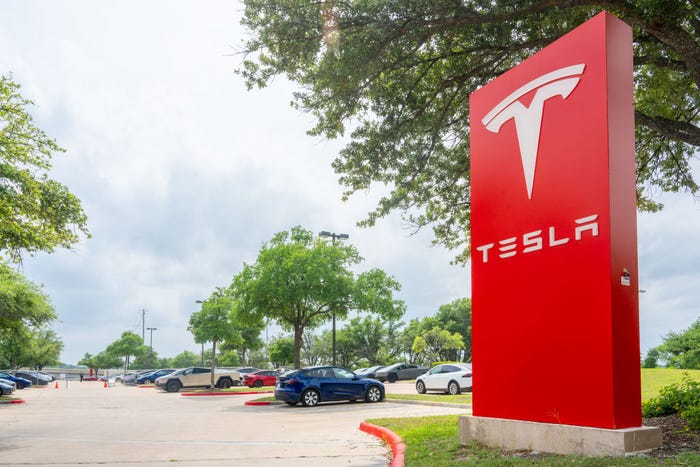Inititially viewed with suspicion by financial institutions, blockchain is now beginning to be taken seriously and has applications far beyond finance.
June 8, 2017

By Heather McKensie
Having initially viewed virtual currencies with deep suspicion, the financial industry is now seriously investigating the potential of the underlying blockchain, or distributed ledger technologies.
The main characteristics of the technology: distributed, near real-time, immutable and digitized, are of particular interest to financial institutions. Blockchain's potential is being investigated across a wide variety of financial services including trade finance, corporate actions processing, cross-border payments and securities trading.
The Euro Banking Association (EBA) says “distributed consensus ledgers” make it possible to jointly create, evolve and keep track of one repository of transactions or other successive events over a shared network. It thinks blockchain has wider potential than cryptocurrencies such as bitcoin alone, defining four application categories: currencies, asset registries, application stacks and asset-centric technologies. At present, financial regulations and legacy technology are hindering the banking industry in adopting blockchain technology in the first three categories.
However, in the field of asset-centric technologies, more headway is being made, with Namecoin, Ripple and Stellar gaining the most attention. These technologies focus on the exchange of digital representations of existing assets, such as currencies, stocks and bonds, in combination with a shared ledger, but not on a public ledger. Trust is organized between participants directly, rather than through a blockchain and mining as is the case with bitcoin.
Participants on the network commit to “publishing” digital assets on the network in various denominations such as USD, RMB, gold, bitcoins. At the same time, some of the participants are responsible for converting these assets, acting as gateways by bridging the gap between the physical and virtual worlds. In order to exchange one digital asset for another, a market maker is required and the EBA believes market makers will most likely be larger financial institutions, for example FX trading houses.
Building on this idea, exclusive exchange agreements between nodes of such networks can be created. The payment services provider (PSP) can then be safe in the knowledge that it is participating in a network with trusted partners and is not exposed to “unscrupulous” third parties.
Asset-centric technologies have another very appealing feature for financial institutions: they enable greater efficiencies in areas such as FX remittances, documentary trade, transactions between PSPs and asset servicing. Vendors are already developing software that can support banks to take advantage of asset-centric technologies.
An early adopter of asset-centric technologies is Germany's Fidor Bank, which in July 2016 was acquired by France's Groupe BPCE. Fidor implemented Ripple Labs technology in order to offer customers instant euro/USD FX transactions at low cost. Under the scheme, Fidor has a trust relationship with a US-based PSP. FX traders are third-party members of Fidor's network, enabling Fidor to transact only with trusted parties in any FX transaction that is required. In Germany, digital assets are defined as accounting units. This has enabled Fidor Bank to partner with Ripple and receive substantially lower FX costs.
Cross-border payments
Blockchain also has a potentially significant market in cross-border payments, of which global remittances reached $583 billion last year. Earthport operates its own distributed ledger service, which ties Ripple's near-time potential to Earthport's cross-border payments service, which focuses on making international payments using local automated clearing houses for clearing. With the addition of distributed ledger technology, Earthport says it can go to “nearly instant” payment. Rather than remittance transactions settling the following day, they can be settled within minutes.
The transparency and decentralized ledger of blockchain have the potential to hold positive reputational aspects for financial institutions, such as a scenario in which a bank or other financial provider wishes to provide transparency to a counterparty of a trade, a regulator or a prospective partner or client.
Identity validation is one application of this transparency scenario. Sharing basic identity information with a specific party would not disclose one's identity to the entire world but can instil confidence in a specific party or individual who might otherwise not trust a given financial provider or counterparty.
Blockchain beyond banking
Blockchain's potential is also being examined outside of financial services in the insurance, energy and healthcare and public sector arenas. In the insurance industry, early investigations have tended to focus on internal applications and improving efficiency. London-based Everledger, for example, is a permanent ledger for diamond certification and related transaction history. It has been developed to help tackle the estimated £2 billion cost of fraudulent claims in the diamond industry, by providing a record of each diamond and enabling merchants to detect if a diamond has been stolen.
In the energy industry, blockchain has the potential to track the flow of electrons in a distributed grid. In future electrical systems billions of end points such as microgrids, solar systems, smart appliances, in-field distributed computing and energy management software, will interact with each other. Blockchain technology could provide a secure system that can verify instantaneous, autonomous transactions across the nodes as market conditions change. It is early days in the industry but those involved believe it has huge potential.
The healthcare industry is looking at how it can use blockchains in a number of ways: to transport medical records from provider to provider and build networks and how health data can be used to incentivise people to be healthier by building reward systems around healthy behaviour using IoT devices. Gem Health, for example, is a blockchain network for the global community of companies and individuals in the healthcare industry. Blockchain technology addresses the trade-off between personalised care and operational costs by connecting the ecosystem to a universal infrastructure. Shared infrastructure allows the company to create global standards without compromising privacy and security.
Using distributed ledger technologies can help governments with a range of activities including issuing passports, land registries and delivering benefits. Estonia has made significant progress in applying blockchain to the public sector. It is building a “digital society”, combining a national ID card system and blockchain. The government collects information on citizens which is auditable and cannot be manipulated in any way.
Jessie Cheng, vice-chair of the Payments Subcommittee of the American Bar Association’s Uniform Commercial Code Committee believes the internet of things cannot be fully realised unless the limitations of existing payments networks are addressed. Devices, such as the Apple Watch or Google Glass, rely on traditional methods of payments such as bank accounts or payments cards.
She cites work by Ripple on an Interledger Protocol, as the start of an era in which money can be moved as seamlessly as information. The Protocol addresses the problems of moving money between payments systems. Connectors compete to provide the best rates and speed. The protocol can scale to handle unlimited payment volume, simply by adding more connectors and ledgers. Composing connectors into chains enables payments between any ledgers and give small or new payment systems the same network effects as the most established systems. This can make every item of value spendable anywhere — from currencies to commodities, computing resources and social credit costly, if it is possible at all.
You May Also Like


.png?width=700&auto=webp&quality=80&disable=upscale)
.png?width=300&auto=webp&quality=80&disable=upscale)


.png?width=300&auto=webp&quality=80&disable=upscale)